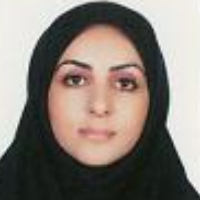A Comparative Study of the Iconographic Painting of Nasser Al-Din Shah at the Beginning and End of the Qajar Period
The painting of the Shah during the Qajar period is one of the main subjects of court sculpture. The face of Naser al-Din Shah (1247 AH - 1313 AH) during his reign goes through a different path from beginning to end. In the early period, his face conforms to the standards and aesthetics of Iranian painting and in the last period of his reign, his face is influenced by the photography industry and social change. A trip to Europe changes European realism and painting. The general question in this article is as follows: What are the changes in the sculptural images of Nasser al-Din Shah in the early and late Qajar period, and the aesthetic criteria of each period due to changing social conditions? Given the importance of paintings of the Shah during the Qajar period, these changes in a painting by Nasser al-Din Shah Qajar are the subject of this study. In order to investigate this issue, the first sculptural painting in the Nasiri period is examined, and then the evolution and differences and similarities of paintings. The content of the present study is qualitative and the method of collecting information is documentary (library) and the research method is historical-comparative. The results indicate that during the long period of Nasser al-Din Shah, Sculpture painting with the theme of the king is seen as one of the main themes in the art of painting. In the early period of his reign, Shah's painting was influenced by the Iranian painting art of the previous and early Qajar periods and has an ancient and idealistic look. In the painting of the last period, due to the influence of social developments of this period, he tends towards realism and photography. The face of the king is humane and real. The subject of a painting by Nasser al-Din Shah can be seen in both periods, but the view of painters has changed according to the social and political conditions of the early and late period, and this is reflected in every painting with the subject of the king. These developments are the result of the Shah's change of mind, connection with Europe, social change, and the use of the art of photography. These factors show that art in both periods is affected by social changes and the view of artists on the subject of sculpture changes with social factors and shows the view of the subject of man in the art of sculpture. [1][1]. This article is the result of a research core entitled "Study of the Art of Sculpture Painting of the Qajar Period" approved by Al-Zahra University
- حق عضویت دریافتی صرف حمایت از نشریات عضو و نگهداری، تکمیل و توسعه مگیران میشود.
- پرداخت حق اشتراک و دانلود مقالات اجازه بازنشر آن در سایر رسانههای چاپی و دیجیتال را به کاربر نمیدهد.


